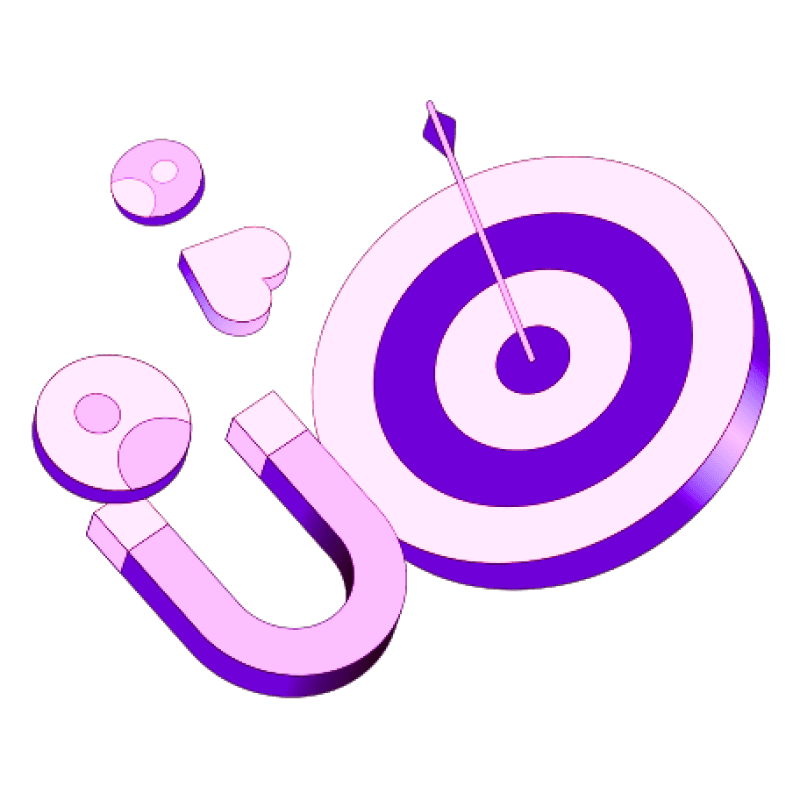Blogs
Articles

What is Inbound Lead Generation?
Email marketing delivers impressive results - each dollar spent brings back $42 on average. Inbound lead generation stands out as the most affordable way to attract qualified prospects to your business.
Inbound leads prove substantially more valuable than outbound ones. These leads show genuine conversion potential because they come from meaningful interactions - blog visits, demo requests, or gated content downloads. Their actions show clear interest in your offerings. Modern B2B customers prefer to research independently before they talk to salespeople. This behavior makes inbound lead generation strategies crucial.
Marketing trends continue to evolve faster. Short-form video and live-streaming emerged as top ROI marketing formats in 2024. Podcasting numbers keep growing and should reach over 110 million US listeners by 2029. Your sales funnel welcomes these inbound leads as soon as you have their contact information.
This piece will help you understand what inbound lead generation means, how it is different from outbound methods. You'll learn a proven three-stage strategy to attract, engage, and convert high-quality leads for your business. Let's take a closer look!
What is Inbound Lead Generation?
Lead generation through inbound marketing attracts potential customers by providing valuable content and experiences that match their needs. Your business draws interested prospects through targeted content addressing their problems instead of pushing messages outward.
Inbound lead generation meaning
Inbound lead generation creates and distributes content to position your brand in front of your target market. Businesses create valuable resources that potential customers can find when looking for solutions. These visitors become inbound leads after they participate with your content and share their contact information.
Marketing teams develop strategies to attract prospects through content marketing, SEO, social media, and other digital tactics. Your brand creates a trail of information and incentives that prospects can follow.
What is the difference between inbound and outbound lead generation?
The main difference between inbound and outbound approaches lies in who controls the interaction. Prospects choose when and where they'll interact with your brand in inbound lead generation. Outbound lead generation reaches out to potential clients through cold calling, email marketing, and direct advertising.
Inbound methods focus on education and relationship-building, while outbound relies on promotional messaging. Research shows that inbound lead generation produces three times as many leads and costs 62% less than outbound methods.
Why inbound leads are more qualified?
Inbound leads are warmer and higher quality because they've already shown interest in what you offer. Research indicates that inbound leads were 45% more likely to become customers than outbound leads.
These prospects actively seek information about your products or services, making them more informed and engaged. B2B buyers complete 67% of their buying journey online, so inbound leads come with substantial knowledge about your solutions.
Prospects enter your funnel at various qualification levels:
Marketing Qualified Leads (MQLs): Engaged with content but not ready for sales conversations
Product Qualified Leads (PQLs): Tested your product through trials or demos
Sales Qualified Leads (SQLs): Explicitly expressed interest in purchasing
Building trust happens naturally through helpful information without pushy sales messages. This approach makes prospects more open to further engagement.
Stage 1: Attract the Right Audience
The life-blood of successful inbound lead generation is getting the right audience to your digital doorstep. We planned and executed strategies in multiple channels to boost visibility among target prospects.
Create SEO-optimized content
The right keywords are the foundations of any successful SEO strategy. Your target audience uses these keywords to search for solutions to their problems. Pick terms that have high search volume but moderate competition - this mix helps your content rank better.
Keyword research goes beyond just rankings - it's about connecting with your ideal customers. Tools like Google Keyword Planner, Ahrefs, and SEMrush show valuable data about search volume and keyword difficulty. Your content should really answer user questions and naturally weave these keywords into titles, headings, and body text.
Use social media to increase visibility
Social media platforms have grown into powerful lead generation channels. Your platform choices should match your target audience's priorities - LinkedIn works best for B2B while Instagram suits visual products.
Create engaging, shareable content that appeals to your audience to maximize results. Social media isn't just about broadcasting messages - it builds relationships through meaningful interactions. Quick responses to comments, regular engagement monitoring, and strategy updates based on analytics make a difference.
Build landing pages that convert
Landing pages turn visitors into contacts and play a vital role in capturing leads. A high-performing landing page has several key parts: a compelling headline, persuasive copy, attractive visuals, and a strong call-to-action button.
Clean layouts and clear navigation make your design easy to use and boost conversion rates. Fast loading speeds and mobile responsiveness are must-have features. Place your forms strategically - they should be simple enough to reduce friction while capturing everything about your leads.
Need help optimizing your inbound strategy? Persana has innovative solutions to streamline your lead generation efforts.
Stage 2: Engage and Nurture Leads
Your website visitors are potential customers. You need to turn them into leads and build strong relationships with them. Here's how you can connect with your prospects effectively.
Use lead magnets to collect contact info
Lead magnets draw your audience's attention and convince them to share their contact details willingly. These free resources provide instant value and help you create a qualified leads list. Ebooks, webinars, free trials, templates, quizzes, and discount codes make great magnets. Strategic placement of these offers on landing pages helps you gather vital lead information that powers your nurturing process.
Score leads based on behavior
Lead scoring helps you spot truly interested prospects among casual browsers. This methodical process assigns values to leads based on how they interact with your content. You'll need to review both implicit data (website activity, email engagement) and explicit information (job title, company size). Actions like visiting pricing pages or requesting demos deserve higher scores than simple engagement. This process helps your team focus on the most promising leads first.
Send personalized email campaigns
Email nurturing creates stronger relationships through relevant, timely messages that are tailored to specific needs. Make your emails personal beyond just using names - address your target audience's specific challenges in each message. Group your audience by industry, job roles, or engagement level to deliver content that truly resonates. On top of that, it makes sense to use marketing automation for sending behavior-triggered emails at the perfect moment.
Want to change your lead nurturing approach? Persana provides innovative tools that help you connect with prospects better.
Stage 3 & 4: Convert and Delight Customers
The final stages transform qualified and nurtured leads into paying customers who promote your brand. This completes the inbound lead generation cycle as prospects become revenue sources and referral generators.
Hand off sales-qualified leads to sales team
Your sales process kicks off when leads reach sales-qualified status. Sales representatives should schedule discovery calls to learn about the lead's needs and showcase your solution. The sales teams can reach out to SQLs through phone calls, LinkedIn InMail, emails, or face-to-face meetings.
Tools like LinkedIn Sales Navigator help you stay in touch with potential customers by alerting you about company changes. Marketing and sales teams must line up their SQL metrics to avoid the common issue of high lead numbers but poor conversion rates.
Provide onboarding and support
Good customer onboarding directly affects your revenue. We designed well-laid-out onboarding to reduce customer loss by balancing speed with individual-specific experiences. Research indicates that all but one of these new users leave mobile apps within the first month if they see no immediate benefits.
Help customers achieve quick, measurable results during their onboarding experience. Regular check-ins help remove obstacles, while milestone celebrations build confidence and enthusiasm. Customer feedback provides valuable insights to enhance future onboarding.
Encourage referrals and reviews
Referrals serve as a powerful engine for growth. Statistics show that referred customers convert 30% better, provide 16% more lifetime value, and stay 37% longer compared to other marketing channels. Asking for referrals right after positive customer experiences produces better outcomes.
Referred leads bring high trust levels with them. Delighted customers showed much higher recommendation rates—28 points more in tourism, 18 in insurance, and 15 in banking.
Do you need help improving your inbound lead conversion process? Persana offers tools to streamline everything from lead qualification to customer delight.
Conclusion
Inbound lead generation is a powerful strategy that helps businesses find qualified prospects who already show interest in their offerings. This approach is different from outbound methods and costs 62% less while producing three times as many leads. These inbound leads convert 45% better because prospects actively look for solutions instead of being interrupted by promotional messages.
A simple three-stage framework creates a path to success. The first stage attracts the right audience through SEO-optimized content, strategic social media presence, and high-converting landing pages. The second stage builds and nurtures relationships with valuable lead magnets, behavior-based scoring systems, and personalized email campaigns. The final stage turns qualified leads into customers by connecting them with your sales team, providing exceptional onboarding, and turning satisfied customers into brand promoters.
Modern B2B buyers complete nearly 70% of their purchasing trip online before they talk to sales representatives. Your inbound strategy must provide value at every touchpoint. These techniques, combined with continuous refinement based on results, will help you build an environmentally responsible lead generation engine that accelerates business growth.
Building effective inbound lead generation might look complex initially, but it brings substantial rewards. You can start small and focus on creating helpful resources for your target audience. Your business will soon attract more qualified prospects who are ready to participate with your offerings.
Key Takeaways
Inbound lead generation attracts qualified prospects through valuable content, delivering superior results compared to traditional outbound methods.
Inbound leads cost 62% less and convert 45% higher than outbound leads because prospects actively seek solutions
Create SEO-optimized content and strategic landing pages to attract your target audience organically
Use lead magnets and behavior-based scoring to capture contact information and prioritize high-intent prospects
Nurture relationships through personalized email campaigns that address specific pain points and needs
Seamlessly hand off sales-qualified leads to your sales team while providing exceptional onboarding experiences
Modern B2B buyers complete 67% of their purchasing journey online before engaging with sales teams, making inbound strategies essential for sustainable business growth.

Create Your Free Persana Account Today
Join 5000+ GTM leaders who are using Persana for their outbound needs.
How Persana increases your sales results
One of the most effective ways to ensure sales cycle consistency is by using AI-driven automation. A solution like Persana, and its AI SDR - Nia, helps you streamline significant parts of your sales process, including prospecting, outreach personalization, and follow-up.



